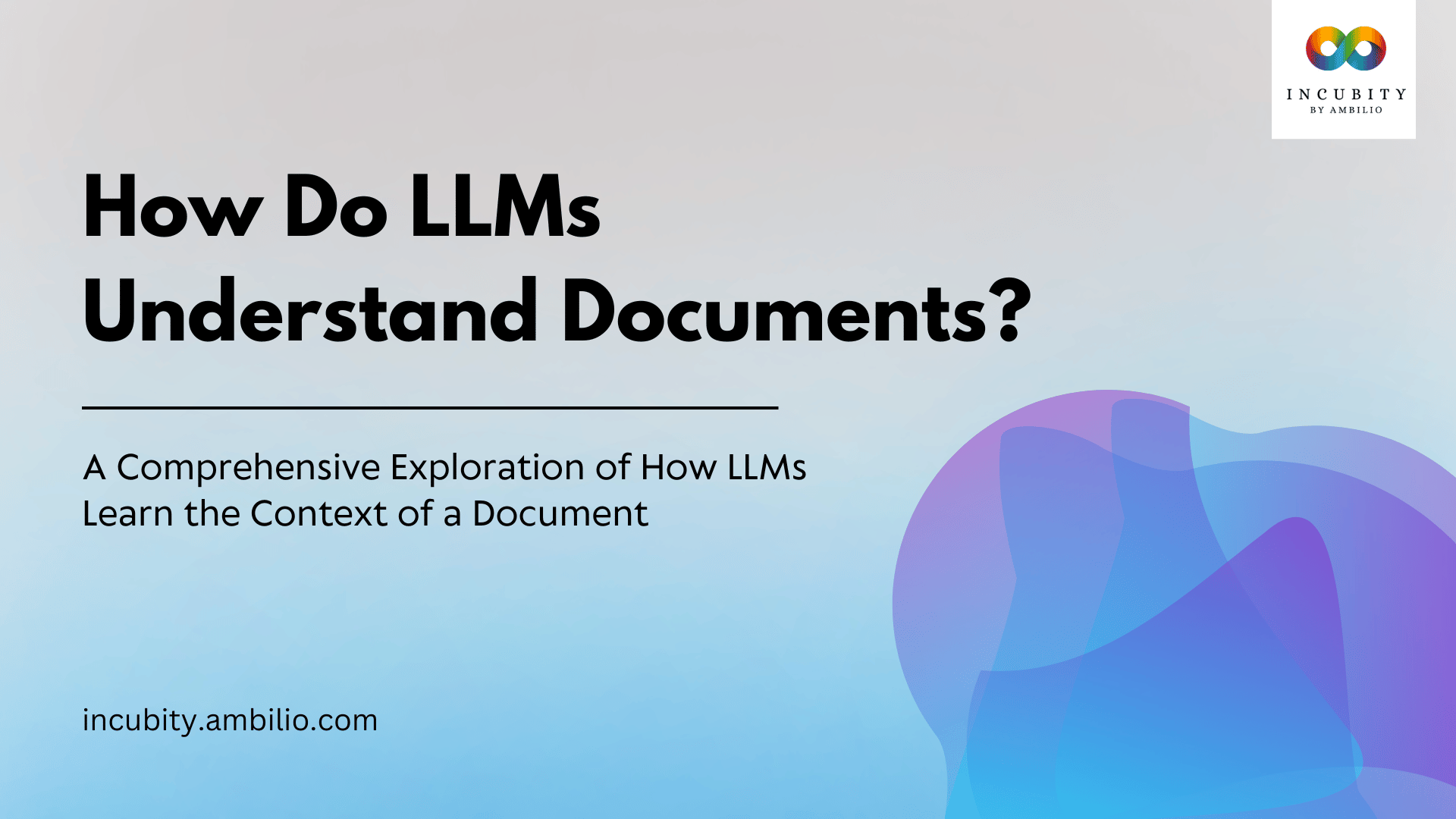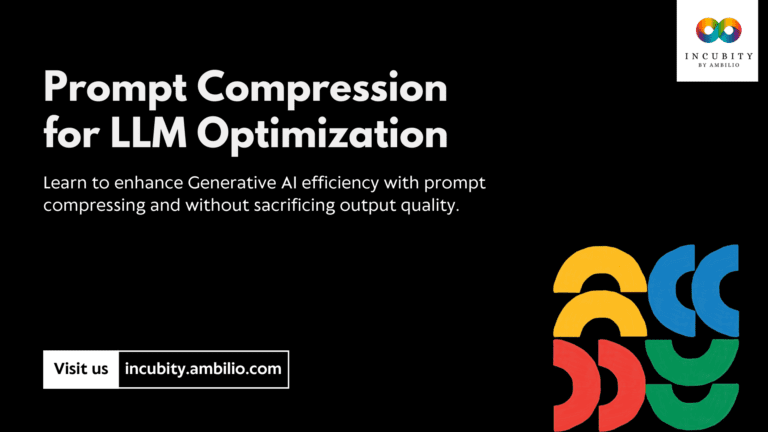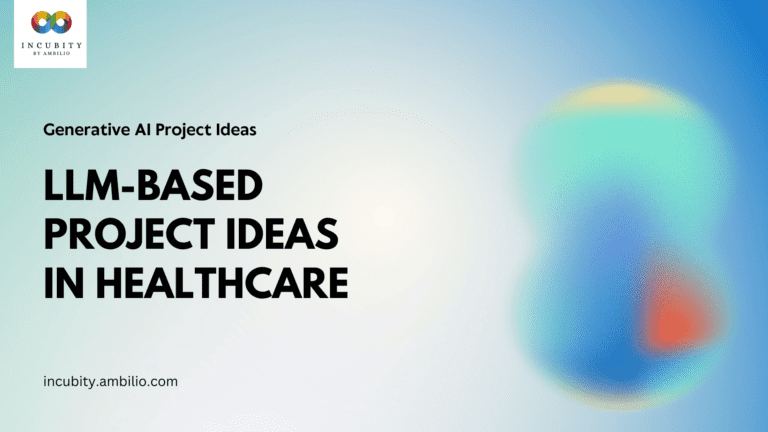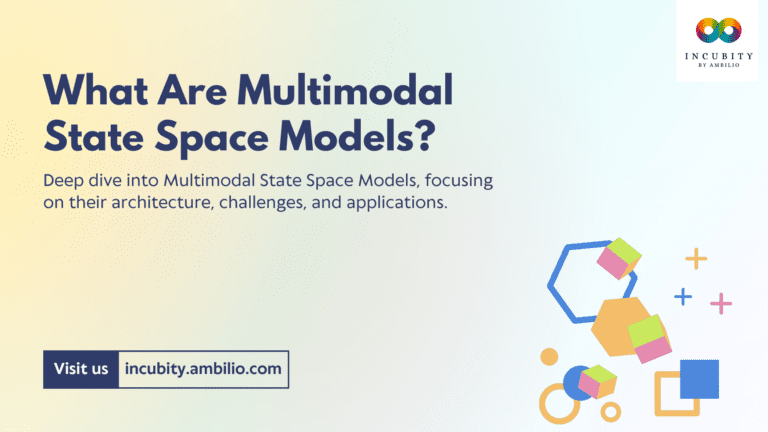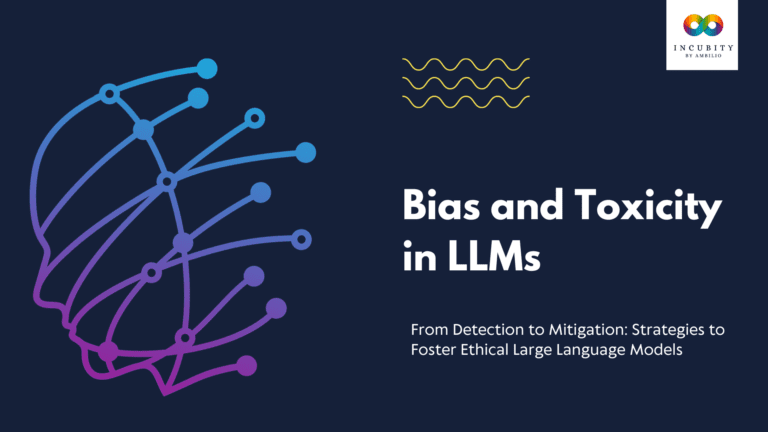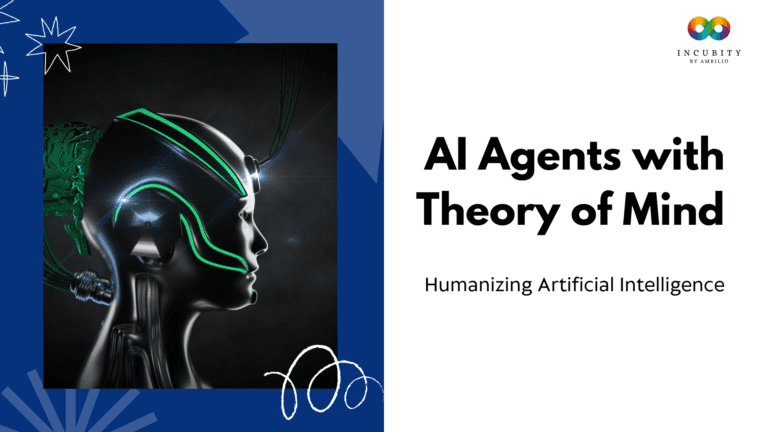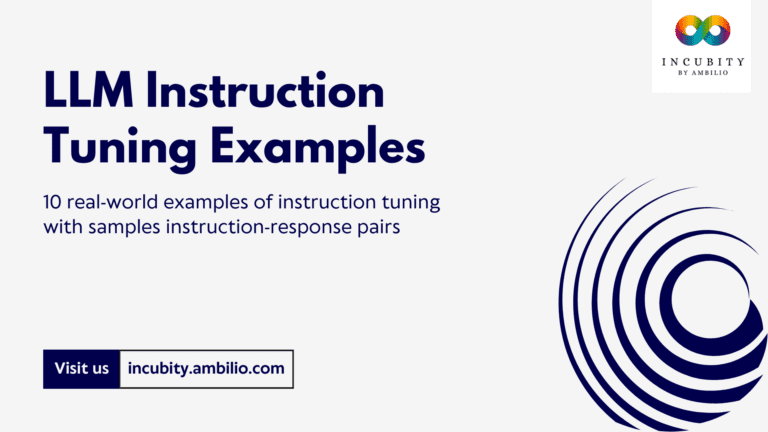In the ever-evolving landscape of Artificial Intelligence, Large Language Models (LLMs) stand as remarkable examples of the potential of machine learning to understand and generate human-like text. These models, typified by GPT, Mistral, LLaMA, and others, have revolutionized NLP by offering unprecedented capabilities in grasping the intricate nuances of language and context. But behind their seemingly magical ability to understand document context lies a complex interplay of algorithms, architectures, and learning strategies that explain how LLMs learn the context of a document.
How LLMs learn the context of a document?
Let us understand in detail, with the following processing steps, how LLMs Learn the context of a document.
Pre-training Phase
The journey of context understanding begins with the pre-training phase, a crucial step where the LLM is exposed to massive amounts of text data. This corpus spans diverse sources including books, articles, websites, and more. Through unsupervised learning techniques, the model embarks on the task of predicting the next word in a sequence given the preceding context. This process, often facilitated by sophisticated transformer architectures, allows the model to absorb the underlying patterns and relationships embedded within the text, laying the foundation for its understanding of document context.
Neural Network Components
The neural network architecture serves as the backbone of LLMs, facilitating their ability to understand and generate coherent text. Within this architecture, several key components work in tandem:
- Embedding Layer: At the outset, the embedding layer takes center stage, transforming raw text inputs into dense, lower-dimensional representations known as embeddings. These embeddings capture both semantic and syntactic meanings, serving as the fundamental building blocks for the model’s understanding of context.
- Feedforward Layers: As the journey progresses, the feedforward layers come into play, tasked with transforming the embeddings into higher-level abstractions. Through a series of nonlinear transformations, these layers extract and distill essential features and nuances from the text, aiding the model in its quest to comprehend the document’s context.
- Recurrent Layers: Operating sequentially, recurrent layers delve into the temporal aspect of language, interpreting words in the context of the entire document. By capturing the relationships between words within sentences and across paragraphs, these layers contribute significantly to the model’s contextual understanding.
- Attention Mechanism: Perhaps one of the most pivotal components, the attention mechanism enables the model to focus its cognitive resources on relevant parts of the input text. By dynamically assigning varying degrees of importance to different words based on their contextual relevance, this mechanism enhances the model’s ability to generate accurate and contextually relevant outputs.
Self-Attention Mechanism
Central to the success of LLMs is the self-attention mechanism, a sophisticated algorithmic technique that allows the model to weigh the importance of different words in a sentence based on their contextual relevance.
Unlike traditional recurrent neural networks (RNNs) that process words sequentially, the self-attention mechanism enables LLMs to capture long-range dependencies and understand the context of a document by considering the relationships between words across the entire document. This mechanism forms the cornerstone of the model’s contextual understanding, empowering it to generate human-like text with remarkable coherence and relevance.
Refining the Understanding
While pre-training lays the groundwork for context understanding, fine-tuning enables the model to adapt its understanding of context to specific tasks or domains. During the fine-tuning phase, the model’s parameters are adjusted to better fit the particular task or dataset it is being trained on. This process allows the model to refine its understanding of context and tailor its responses to the specific requirements of the task at hand, whether it be sentiment analysis, language translation, or text summarization.
In-Context Learning
In recent years, the concept of in-context learning has emerged as a powerful strategy for enhancing the model’s understanding of document context. This approach involves merging features of demonstrations into corresponding labels and aggregating features of input text into the last token. In-context heads within deep layers play a crucial role in this process, computing attention weights between the input text and each demonstration to facilitate the transfer of label information into the last token for predicting the next word.
This iterative process of learning from context-rich demonstrations enables the model to adapt and refine its understanding of document context over time, unlocking new horizons in natural language understanding and generation.
Limitations and Advancements
Despite their remarkable capabilities, LLMs are not without their challenges. Recent research has highlighted the limitations of pre-trained dense models in understanding nuanced contextual features compared to finely-tuned models. Additionally, quantization studies have revealed that post-training quantization can lead to varying degrees of performance reduction in context understanding benchmarks.
However, amidst these challenges, there have been remarkable advancements in the field. The discovery of meta-in-context learning, for instance, has opened up new avenues for recursively improving the model’s understanding of document context through self-learning mechanisms. By reshaping priors over expected tasks and modifying in-context learning strategies adaptively, meta-in-context learning promises to usher in a new era of context-aware artificial intelligence.
Final Words
In conclusion, the journey of how large language models learn the context of a document is a complex and multifaceted one. From the initial stages of pre-training to the fine-tuning process and beyond, LLMs navigate a complex terrain of algorithms, architectures, and learning strategies to master the nuances of language and context. While challenges abound, recent advancements in in-context learning and meta-learning offer promising avenues for enhancing the model’s understanding of document context. As research in this field continues to evolve, the future holds boundless possibilities for unlocking new frontiers in natural language understanding and generation.

